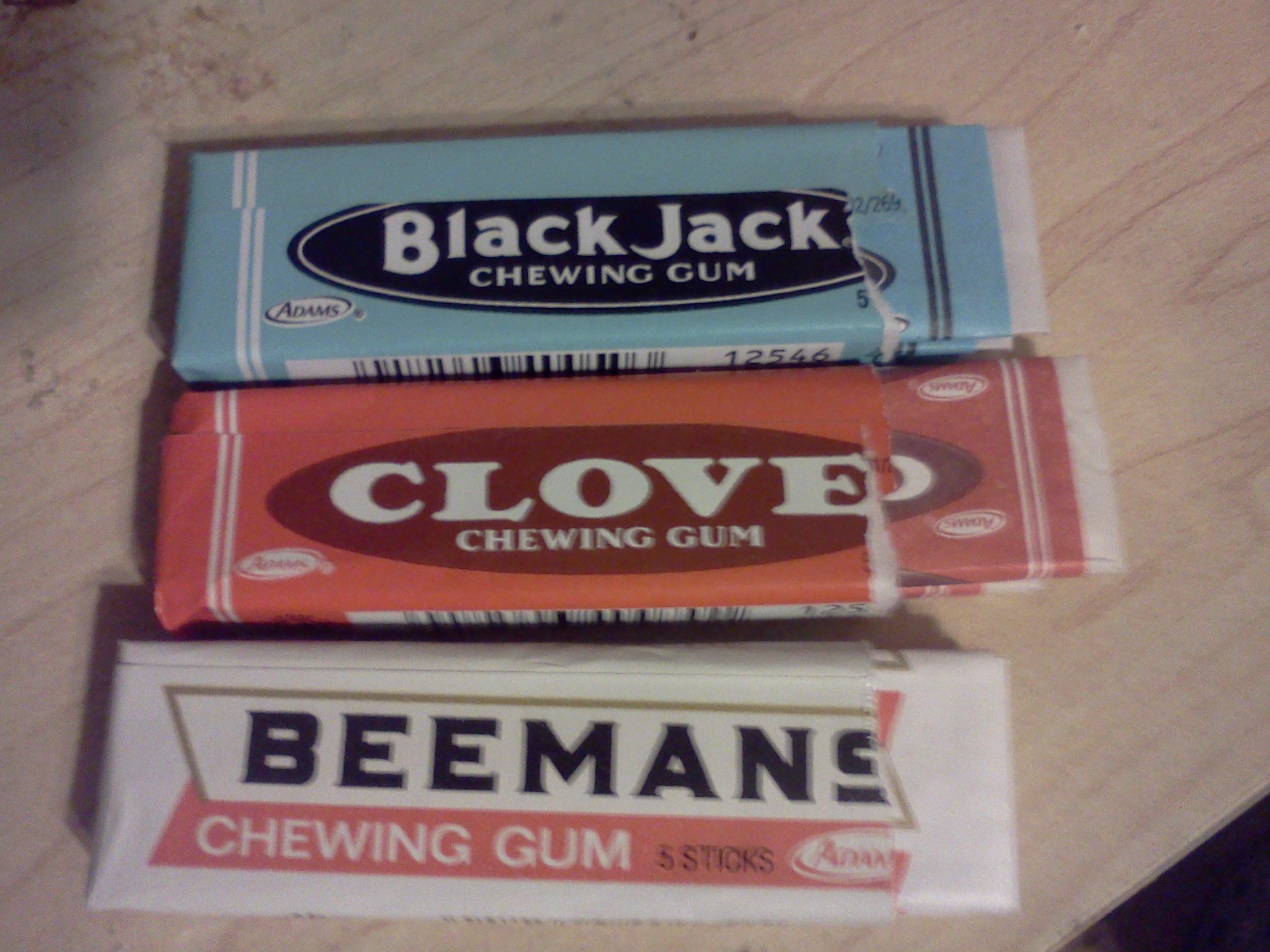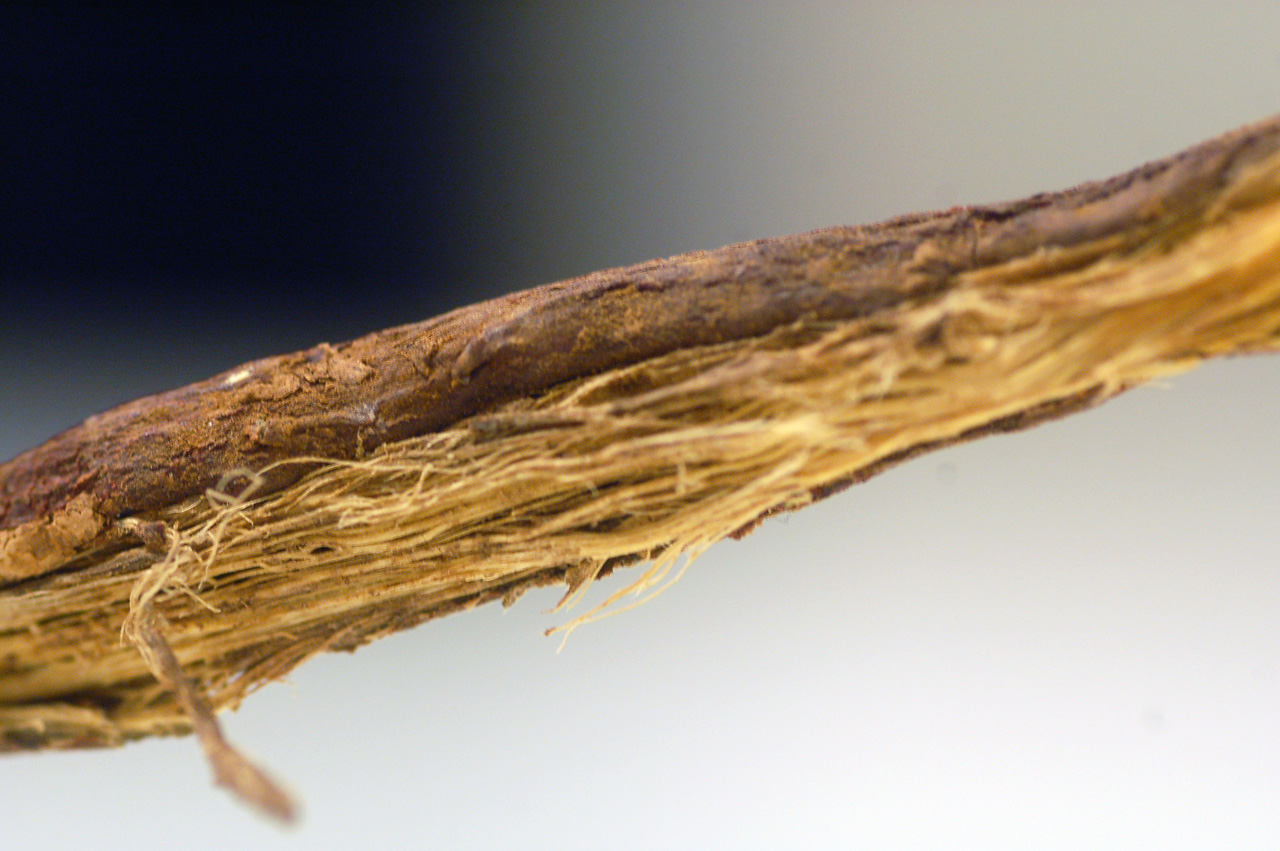Whether you chew for a purpose or for pleasure, you’ll be happy to know that chewing gum can, in moderation, do little harm; and, if you choose well, it can even be beneficial. While it bore little resemblance to the marvelously-flavored elastic substance we enjoy today, our ancestors apparently found reasons for gnawing on non-foods as well.
The earliest chewing gums were, of course, naturally derived; and varied depending on what was readily available in the area. As early as 9,000 years ago in northern Europe, birch bark tar made it into the mouths of men, quite possible for the purpose of oral hygiene. Similarly, the sap from spruce was chewed by Native Americans, and early settlers also adopted the habit.
Ancient Greeks chewed mastic from the evergreen Pistacia lentiscus, and Asians formed an addictive oral bond with the chewable betelnut. But it was chicle — a milky latex collected from plants of the genus Manilkara and chewed by the Mayans and Aztecs of Mesoamerica — that paved the road for patents and today’s 30 billion dollar industry.

Evolution of modern chewing gum
In 1848, Businessman John B. Curtis began manufacturing spruce gum for commercial sales, adding paraffin wax to the formula in the 1850’s. Curtis developed a machine for mass production, and, with his father, started the first chewing gum factory in Portland, Maine, producing 1,800 boxes of chewing gum per day.
Around the same time, chicle entered the United States, along with 11-time Mexican President Antonio Lopez de Santa Anna. Exiled to Staten Island, the self-proclaimed “Napoleon of the West” began importing chicle from his homeland. Perhaps in an effort to make a fortune and regain power, Santa Anna joined forces with New York inventor Thomas Adams to develop a chicle product meant to replace rubber.

Success
You are now signed up for our newsletter
Success
Check your email to complete sign up
One experiment after another failed, and Adams began to grow disheartened; until the apparition of a young girl purchasing a pack of paraffin chewing gum at a pharmacy inspired the entrepreneur to capitalize on chicle’s original use.
With the enthusiastic support of his son and the pharmacist, Adams developed a commercial product from chicle. Small sticks of unflavored chicle were wrapped in colorful paper and sold in a pack labeled “Adams New York No. 1.”
Thomas Adams Junior, a salesman, promoted the product in his travels, and it was popular enough to merit the invention of a machine to mass-produce chewing gum, which Adams had patented in 1871. With the addition of flavor to their chewing gums, including fruit-flavored “California Fruit Gum,” licorice-flavored “Black Jack” and peppermint-flavored “Chiclets,” Adams Sons and Company quickly became the country’s most prosperous chewing gum company.

Other entrepreneurs, like Wrigley, — whose unprecedented marketing strategy brought remarkable success, and Frank Fleer — whose employee Walter Diemer developed bubble gum, expanded the market. By the 1920s, Americans were chewing an average of 105 sticks per year.
While a boon to the Latin American economy, this heightened demand for chicle led to unsustainable harvesting practices, and government restrictions were put in place. In response to higher chicle prices, gum companies increasingly resorted to alternative gum bases — like synthetic rubber and petroleum-derived paraffin — which we continued to chew.
Today, nearly 50 percent of all Americans chew gum. Why? Well, aside from the fun factor, chewing gum can have a number of benefits.
Benefits of chewing
Chewing anything — food or non-food — stimulates the production of saliva. Mostly water, saliva helps wash away germs and bacteria; but it also contains an enzyme called amylase — which begins the digestive process — as well as minerals and proteins that help protect your teeth from decay.
The sticky wad is also good for collecting bits of food that didn’t make it out of your mouth. Once sugar-free varieties of chewing gum became available, dentists everywhere recommended them to help keep the mouth clean between meals.
Chewing gum is also believed to calm the nerves; as the rhythmic motion of chewing reduces levels of cortisol. Chewing has been shown to reduce anxiety, stress and depression, while improving focus.
Whether it is a side effect of reduced stress, the fresh burst of flavor, or simply the chewing action; chewing gum can perk you up when drowsy and increase blood flow to the brain — enhancing memory and cognition.
Chewing gum may even boost self-esteem. Most chewing gums have a strong flavor which lends a pleasant scent to your breath, and it is generally accepted that chewing gum helps prevent snacking — thus facilitating weight control.
If that were the whole story, there would be no issue about choosing your chewing gum. Yet chewing gum — especially today — comes with complications.
What to watch out for
While chewing gum may have improved in flavor and texture over the past century, it also became a potential health threat for habitual chewers. The main ingredients of most chewing gums range from dubious to dangerous. Let’s have a look.
Gum Base
The vast majority of chewing gums no longer have chicle as their base. Instead, they are an undisclosed compilation of elastomers (for stretchiness), resins (for binding), plasticizers (for blending), fillers (for texture), and preservatives.
Since we are not privileged to know exactly what we are chewing on, it may be safest to assume the worst. And don’t think that just because you don’t swallow your chewing gum, it has no effect on your body. Chemical ingredients are absorbed directly through the membranes of the mouth; and chances are you do swallow the saliva generated from chewing, along with whatever the gum has released into your mouth.
Artificial sweeteners
While artificial sweeteners have been promoted as a “healthy” alternative to sugar, they have their own issues. For one thing, artificial sweeteners can actually lead to weight gain, since the body experiences sweetness — but doesn’t get the satisfaction of calories — it creates cravings and stimulates fat storage.
More disturbing, many artificial sweeteners are thought to increase the risk of serious illnesses. While there are plenty of voices (and dollars) to debunk the claims, various studies have linked artificial sweeteners with increased risk of some cancers, liver and kidney toxicity, premature birth, diabetes and anxiety.
B.H.T
Butylated Hydroxytoluene is an antioxidant commonly used as a preservative in chewing gum. Some reports claim that B.H.T is linked to kidney and liver damage, hyperactivity in children, and organ system toxicity. It is a potential carcinogen that has already been banned in Europe, Canada, Australia and New Zealand.
Whitening agents
Fillers not only give gum a soft texture, they can also serve to brighten the appearance of chewing gum (as opposed to your smile). Commonly used whitening agents include titanium dioxide and calcium casein peptone. Children’s exposure to titanium dioxide comes primarily from confections, with chewing gum at the top of the list. It is a possible carcinogen that has been linked with asthma, autoimmune disorders and Crohn’s disease.
Calcium Casein Peptone (CCP) is a highly processed milk derivative used as a filler in some gum bases. While little is known about its long-term effects, CCP was linked to the poisonings caused by Chinese baby formula.
What’s a chewer to do?
As is the case with many things, “new and improved” does not necessarily mean “better.” While natural gums are few and far between, they do exist — both as chewing gum and raw materials. Simply Gum, Chicza, Glee gum and The Humble Co. are a few examples of plant-derived gum bases. Some of them are sweetened with organic sugars, while others offer the natural, sugar-free option of xylitol — a sugar alcohol derived from plants.

Xylitol has the benefit of inhibiting bacteria that cause tooth decay, without the drawbacks of artificial sweeteners. However, if you’re looking to forgo sweeteners altogether — and are flexible about flavor and texture — you can go back to the basics.
Healthy alternative chewables:

Fennel seed
Chewing on fennel seed is not only natural — it is undeniably healthy. Fennel is known to aid digestion and is often served after a meal in India to freshen the breath. Fennel is naturally sweet and anti-inflammatory, with some antibacterial properties as well. While there is nothing elastic about this chew, swallowing the pulp is a decent addition of fiber to your diet.

Licorice root
Real licorice (not the candy) is another chewable with flavor and benefits similar to fennel. One of the first herbal medicinals, licorice root was used in ancient China, Egypt, and Greece against a variety of ailments. Its natural sweetness comes from glycyrrhizin, which does not cause tooth decay. While it may be difficult to find fresh, organic dried licorice root is available in both sticks or pieces.
Ginger root
Although this spicy chewing option may be too potent for most of us to tolerate raw, ginger root comes with a long list of benefits. In addition to being a natural pain reliever, ginger is an immune booster with anti-inflammatory, antibacterial, and antioxidant properties. It aids in digestion and relieves nausea, promotes brain and heart health; all while refreshing the breath with the powerful compound 6-gingerol.
Tree resins

While deciduous trees produce a watery sap, evergreens produce sticky resins. Mastic is a natural resin that comes from sap of the Pistacia lentiscus tree in Greece. It can be purchased as brittle, translucent pieces which soften in the mouth. It has a woodsy flavor, as you might imagine, and promotes oral health while offering some digestive benefits as well.
You can also harvest your own resin. Sap will drip from the location of any injury to the bark of pine and spruce trees. Avoid collecting from the wound area, though. Just like picking the scab off a flesh wound interrupts healing in humans, that would be harmful to the tree; so harvest only what has run down the trunk. It may be easier to collect when chilled, since it is incredibly sticky stuff.
These resins are both antibacterial and antifungal, and contain an irritant called Abietic acid – an organic compound that can speed healing by increasing circulation and inflammation where applied.

Wheat berries
A natural gum that is arguably the most similar to commercial chewing gums, chewed wheat berries yield an elastic substance known as gluten — the very same stuff that gives bread its chewy texture, and what you want to avoid if you suffer from celiac disease.
For those without wheat sensitivities, however, wheat berries are a satisfying swap. They are easy to obtain, but a bit hard to chew — although pre-soaking can fix that. As you grind these small kernels with your teeth, the fibers will separate from the gluten, and after a few minutes of swallowing bits of bran you will end up with a nice wad of flavorless chewing gum. Not exactly “yum,” but you can blow bubbles with it!

A final note
Although chewing gum enjoys worldwide popularity, it is by no means universally accepted. Many regard the practice as vulgar or impolite. Europeans often chew briefly after a meal and promptly dispose of the gum, rather than chomping while they chat.
Gum chewing is frowned upon in school, and Mesoamericans once saw gum chewing in public as the mark of a prostitute in women, or effeminacy in men. Singapore has banned the practice altogether. While Americans still enjoy the freedom to chew, we might be viewed in a more positive light if we kept our gum chewing more private.













